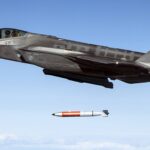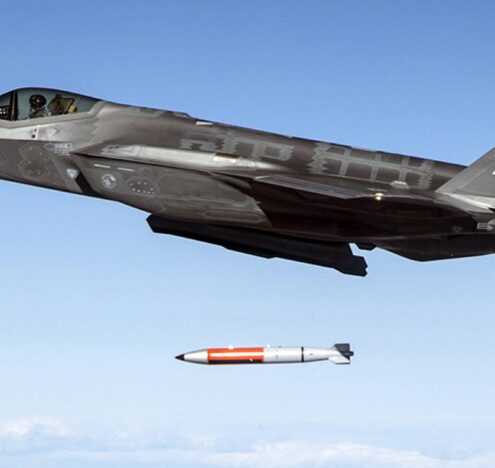The Senate Armed Services Committee recently voted to inflate national security spending by $25 billion, a dangerous increase to an already superfluous budget.
Spearheaded by Mississippi Senator Roger Wicker, the proposal invokes the Reagan-era mantra of “peace through strength.” But a larger budget won’t make Americans any safer.
Runaway national security spending is integral to the never-ending pursuit of US military dominance. This pursuit is dangerous to both US democracy and the world because it encourages militarism — not just at home but abroad. So the notion that increased budgets automatically translate to enhanced safety and global influence is misguided. It reflects decisionmakers’ unwillingness to make difficult tradeoffs on foreign and defense policy matters.
Bigger budgets also do not, by virtue, bolster national power. Instead they can lead to unnecessary expenditures on non-essential weapon systems, further ingraining non-competitive military contractors into the US economy at great opportunity cost. Overfunding national security programs can undermine military readiness by diverting resources from critical security needs and complicating strategic decision-making at the Pentagon. The department already struggles to make these decisions due in part to expansive, unrealistic, and unclear strategic guidance from the administration.
Further increasing the national security budget can exacerbate this issue. Evermore spending pushes the United States toward strategic insolvency while providing increasingly marginal returns in military capability. Despite what the White House and policymakers might think, the United States has political and economic limits. It cannot and should not do everything, everywhere, all at once. More spending is economically irresponsible and dangerous, as it risks sparking arms races with other countries.
Not Worth the Squeeze
Still, policymakers often increase national security spending beyond the Pentagon’s requests. This can result in weapon systems that may not be essential or fully operational. Take, for example, the F-35 fighter jet, the Littoral Combat Ship, and the V-22 Osprey. The combined life cycle cost for these programs totals at least $2,084,000,000,000. All of them struggle with design flaws that render their juice not worth the squeeze. In many cases, the United States is better off, in terms of both capability and cost, maintaining existing systems rather than developing new, overly complex ones.
Spending plus-ups disincentivize more discerning thinking about what systems the US really needs to maintain, develop, or update. And modernization costs, delivery delays, and testing issues are the largest contributor to cost growth for the Pentagon’s most expensive weapon programs. The main beneficiaries of unlimited national security spending are the defense industry and its devotees in Congress, Wicker included. He has taken more campaign donations from arms makers this election cycle than any other Senator.
Still, policymakers often increase national security spending beyond the Pentagon’s requests.
As a ranking member of the Senate Armed Services Committee, Wicker is pushing for a $55 billion increase to the national security topline, aiming for $950 billion in fiscal year 2025 with consistent annual growth until national security spending reaches 5% of gross domestic product (GDP). Wicker argues that with more money, the Pentagon can procure large numbers of new aircrafts and ships to save the US military from “its death spiral of ever-increasing maintenance costs” on aging hardware.
Still, Wicker fails to acknowledge the acquisition failures of the past 25 years. The services will continue to experience these failures if Congress throws more money at the Pentagon, especially given unrealistic strategic goals. Still, Wicker claims that such a “generational investment” will “restore America’s military strength for decades to come.”
Substantial Military Power
Yet, the United States already possesses substantial military power, and it accounted for 37% of $2.44 trillion dollars in global national security spending in 2023. Adjusted for inflation, the president’s fiscal year 2025 US national security budget far surpasses what the United States spent at the height of the Cold War or during the Korean and Vietnam wars. Wicker justifies more spending by stating that US adversaries are “racing” while the US walks, with China fielding cheap weapon systems quickly and Russia embracing a “war economy.” He doesn’t consider the root causes of these developments or explain how more spending will effectively address them.
Wicker argues that US military spending has actually slowed, measuring national security spending as a portion of GDP. Economic output, however, does not dictate US national security needs. These are determined by strategic interests, not a fixed percentage of GDP – for which military spending is a key factor. Assuming continuous growth, Wicker contends that the United States can’t meet its national security needs without forever increasing military spending. Those who share that perspective ignore the long-term implications of even more runaway national security spending: arms racing, waste, and declining readiness.
Policymakers should reconsider the breadth of US weapon acquisition and modernization plans. The United States faces a complex security landscape that requires policymakers to make tradeoffs, not spend more money. A bigger national security budget inhibits the United States from pursuing more productive endeavors, and it doesn’t necessarily elicit better security outcomes. In fact, it can have the opposite impact while further muddying strategic priorities that already lack the detail required to guide the Pentagon through hard programming decisions. These decisions will not get any easier to make.





















